A dark and painful part of Spain’s history was back under the spotlight yesterday, when the remains of dictator Francisco Franco were exhumed from a landmark basilica in the hills near Madrid.
The delicate operation to move his remains to a more discreet resting place began yesterday morning, despite a long-running legal battle by the dictator’s family.
However, it threatens to open barely healed wounds in a nation riven with contradictions — where more than 100,000 people are still listed as missing following the 1936-1939 Civil War and its aftermath, yet where villages bear names in honor of the dictator who ruled until his death in 1975.
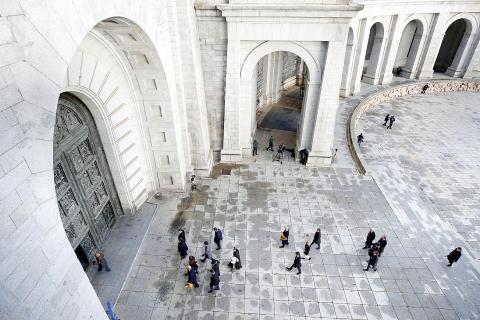
Photo: EPA-EFE
“Obviously, there are wounds that remain raw given that you have more than 100,000 people still lying in ditches and mass graves,” Newcastle University historian Alejandro Quiroga said.
The figures make Spain the nation with the second-largest number of “disappeared,” following Cambodia, he said.
Forty-four years on, the single-biggest symbol of the war and the decades of dictatorship is the Valley of the Fallen, a vast temple-like complex about 50km northwest of Madrid, where Franco is buried.
That such a monument exists makes Spain the “great anomaly of western Europe,” with no such parallel in any other European state that survived a totalitarian leader, be it Germany, Italy or Portugal, Zaragoza University modern history professor Julian Casanova said.
Topped by a 150m cross, the hillside basilica has attracted both tourists and right-wing sympathizers, with many on the left repulsed by the memorial, comparing it to a monument glorifying Hitler.
For that reason, the government of Spanish Prime Minister Pedro Sanchez has insisted on Franco’s remains being removed, saying the nation should not “continue to glorify” the dictator.
Built by Franco’s regime from 1941 to 1959 — in part by the forced labor of about 20,000 political prisoners — the site contains the remains of more than 33,000 dead from both sides of the civil war.
However, it has long been a draw for those nostalgic for the Franco era, who go there to hold masses in his honor and celebrate his memory.
Historians agree that removing Franco’s remains from the Valley of the Fallen would be a “step” toward normalization for Spain.
Unlike other figures like Hitler or Mussolini, Franco survived World War II and did not drag Spain into the conflict, dying three decades later while still in power.
On his death, the political leaders agreed on a transition to democracy that “maintained the political, social and economic elites that existed under Franco ... and implicitly maintained the idea that the Franquist past would not be the basis for political confrontation,” Quiroga said.
However, in 2007 the Spanish parliament, under a Socialist government, approved the “historical memory” law that aimed to give greater recognition to victims on both sides of the civil war.
The law involves the removal of all symbols honoring Franco, and requires the state to collaborate in the search for and exhumation of the mass graves of those who disappeared.
However, its implementation has been blocked by the right, leaving those associations dedicated to tracking down the disappeared to pursue their thankless task “entirely alone,” Open University historian Marc Gil said.
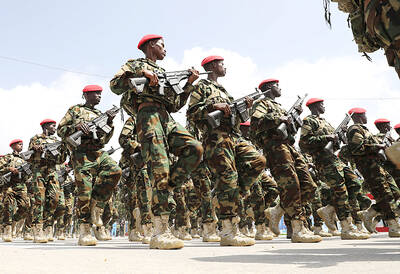
ELECTION DISTRACTION? When attention shifted away from the fight against the militants to politics, losses and setbacks in the battlefield increased, an analyst said Recent clashes in Somalia’s semi-autonomous Jubaland region are alarming experts, exposing cracks in the country’s federal system and creating an opening for militant group al-Shabaab to gain ground. Following years of conflict, Somalia is a loose federation of five semi-autonomous member states — Puntland, Jubaland, Galmudug, Hirshabelle and South West — that maintain often fractious relations with the central government in the capital, Mogadishu. However, ahead of elections next year, Somalia has sought to assert control over its member states, which security analysts said has created gaps for al-Shabaab infiltration. Last week, two Somalian soldiers were killed in clashes between pro-government forces and
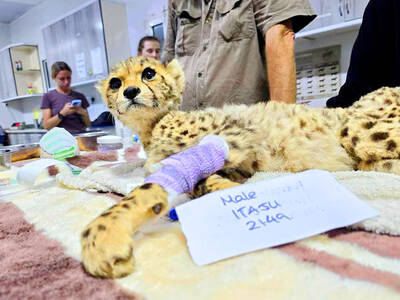
Ten cheetah cubs held in captivity since birth and destined for international wildlife trade markets have been rescued in Somaliland, a breakaway region of Somalia. They were all in stable condition despite all of them having been undernourished and limping due to being tied in captivity for months, said Laurie Marker, founder of the Cheetah Conservation Fund, which is caring for the cubs. One eight-month-old cub was unable to walk after been tied up for six months, while a five-month-old was “very malnourished [a bag of bones], with sores all over her body and full of botfly maggots which are under the
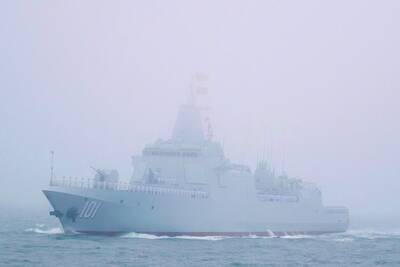
BRUSHED OFF: An ambassador to Australia previously said that Beijing does not see a reason to apologize for its naval exercises and military maneuvers in international areas China set off alarm bells in New Zealand when it dispatched powerful warships on unprecedented missions in the South Pacific without explanation, military documents showed. Beijing has spent years expanding its reach in the southern Pacific Ocean, courting island nations with new hospitals, freshly paved roads and generous offers of climate aid. However, these diplomatic efforts have increasingly been accompanied by more overt displays of military power. Three Chinese warships sailed the Tasman Sea between Australia and New Zealand in February, the first time such a task group had been sighted in those waters. “We have never seen vessels with this capability
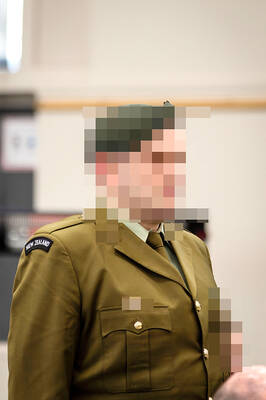
‘NO INTEGRITY’: The chief judge expressed concern over how the sentence would be perceived given that military detention is believed to be easier than civilian prison A military court yesterday sentenced a New Zealand soldier to two years’ detention for attempting to spy for a foreign power. The soldier, whose name has been suppressed, admitted to attempted espionage, accessing a computer system for a dishonest purpose and knowingly possessing an objectionable publication. He was ordered into military detention at Burnham Military Camp near Christchurch and would be dismissed from the New Zealand Defence Force at the end of his sentence. His admission and its acceptance by the court marked the first spying conviction in New Zealand’s history. The soldier would be paid at half his previous rate until his dismissal